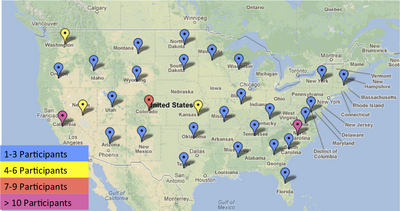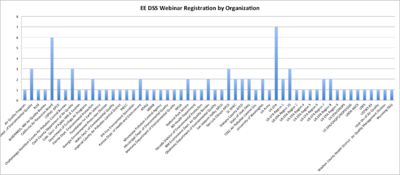EE DSS Webinar
< Exceptional Air Pollution Event Analysis Community Workspace | Discussion | News | Participants | About
This webinar will introduce the Exceptional Event Decision Support System (EE DSS) of which purpose is to identify and to document observations that are candidates for exceptional event flagging. This session is focused on screening the AQS data for exceedances above "normal" values and to indicate potential smoke or dust causes. Based on this screening, States can identify candidate samples for EE flagging. The EE DSS is to support the States in their submission of EE flags for 2012, by the July 1, 2012 deadline. The 90-minute webinar we will cover the following topics:
- EE DSS support of EE Rule implementation;
- EE DSS description; Finding exceedances above normal variations; Candidate causal sources (dust or smoke)
- Demonstration of specific flagging examples
Note: There will be another webinar at the end of May following up on this same topic, incorporating feedback from State analysts. The outcome of these webinars will be a list of candidate EE flag observations. These are not "official"; the final decision to use these observations is still the responsibility of the submitting State.
Webinar Outline
The hour and a half webinar will have three parts:
Intro
- What are exceptional events?
- Description of steps (1) state observation (2) compare to standard - Ozone (daily max), PM2.5 (daily max, yearly average), PM10 (daily max) (3) Four steps that mgmt has to consider
- We have tool set that are nationally applicable for both flag id and documentation therefore there is a decision support system that is to be applicable to any of the exceedance types, regardless of cause, pollutant, and of region.
- Identify two dates flag submission (July 1) and documentation submission (Dec. 15)
- Priority is on screening for flagging event and what is the potential cause - categories
- Intro to the EE DSS by Rudy Husar, Washington University;
EE DSS is to screen for exceedances from all four standards (those above normal variations) and identify the type of cause (by EPA category).
EE DSS
Describe steps and how EE DSS deals with them
- Exceedance
- Exceeding normal variation
- Exploration of potential causes (Dust/smoke- NAAPS; Fire pixels, wind speeds etc, console)
Use Cases
- Hands-on session to try the EE DSS for your own State;
- List of all exceedances for each of standards above normal and corresponding "high normal" value in 2012 to see how far above normal you are; cut-off for how far above normal is flexible. - to be distributed
- Compare list to NAAPS dust/smoke
- Some easily attributable
- Left over neither dust or smoke
- Wrap-up Q&A
Resources
Webinar Details and Registration
Topic: Exceptional Event Documentation Training
Host: CAPITA at Washington University, ESIP Federation AQ Workgroup
Date: Tuesday, April 30, 2013
Time: 3:00 pm, Eastern Daylight Time (New York, GMT-04:00)
Session Number: 920 523 275
To register for this training session
Go to https://esipfed.webex.com/esipfed/k2/j.php?ED=222698102&UID=1560585307&HMAC=6a9d5b20eee6a53faab07902334301cbbdf01cc1&RT=MiMxMQ%3D%3D&FM=1 and register.
Once you are approved by the host, you will receive a confirmation email with instructions for joining the session.

